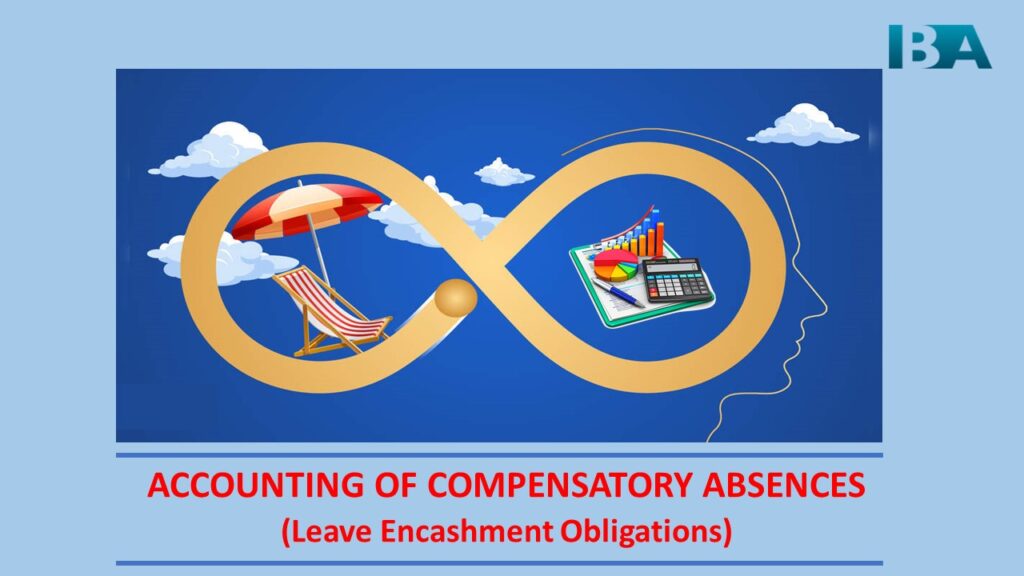- August 23, 2021
- Posted by: IBA LLP
- Category: Articles, Others

Introduction :
AS 15 shall be applied to by an employer to all types of employee benefits which are defined as “all forms of consideration given by an entity in exchange for service rendered by the employee Or for the termination of the employment”
Employee benefits covered under this standard, include those provided :
- Under formal plans / arrangements between the entity and employees;
- Under legislative requirements – viz. contribution plans; AND
- By informal practices giving rise to constructive obligation – viz. bonus etc. .
The below is with reference to accounting provisions to be made in financial reporting of enterprises for Compensatory Absences (Leave Encashment Obligations) in compliance of Accounting Standard AS -15 (Revised 2005) issued by Accounting Standard Board of the Institute of Chartered Accountant of India.
The types of Compensatory Absences (Leaves) are as under :
- Annual Leave/Privileged Leave/Earned Leave
- Sick Leave,
- Casual Leave,
- Maternity/Paternity Leave,
- Any other Leaves.
1. Classification of Compensatory Absences (Leaves) For the purpose of valuation Compensatory Absences (Leaves) are classified as :
(A) Long Term Compensatory Absences :
Long-term employee benefits include, for example :
- long-term compensated absences such as long-service or sabbatical leave;
- jubilee or other long-service benefits;
- long-term disability benefits;
- profit-sharing and bonuses payable twelve months or more after the end of the period in which the employees render the related service; and
- deferred compensation paid twelve months or more after the end of the period in which it is earned.
These Compensatory Absences are clubbed under – “Other Long-term Employee Benefits” (Refer paragraph 127 of the Accounting Standard)
(B) Short Term Compensatory Absences. (such as paid annual leave) where the absences are expected to occur within twelve months after the end of the period in which the employees render the related employee service;
2. Long Term Compensatory Absences (Leaves)
(a) Identification
Those Compensatory Absences expected time of settlement of which (Availing of Leave or Encashment of Leave) can be carried forward beyond twelve months after the end of the period in which the employees render the related service and are expected to be availed /used or encashed in future are classified as Long Term Compensatory Absences (Leaves). These Long Term Compensatory Absences (Leaves) fall in the category of “Other Long term Employee benefits” [Refer paragraph 127 of AS15 (Revised)
(b) Measurement
Once it is decided that leave is long term, then the entire leave is to be measured as such. In this connection it is pertinent to note paragraph 67 of revised AS-15 which states that “An enterprise discounts the whole of post-employment benefit obligation, even if part of the obligation falls due within twelve months of the balance sheet date
(c) Methodology
Projected Unit Credit Method (PUC) is to be used to determine the present Value of the obligation.
(d) Other Points:-
Measurement of availment of leave should based on Cost to Company Salary (CTC) :
1. Short Term Compensatory Absences
Those Compensatory Absences which accrue to employees and are expected to be availed or encashed within twelve months after the end of the period in which the employees render the related service are short-term compensatory absences. Measurement should take into account the following points:-
- Leave at credit needs to availed/encashed within twelve months
- Cost to Company (CTC) and
- Probability that a portion of leave may lapse without giving rise to any Liability.
For interim valuations short-term benefits should be treated as benefits payable within twelve months from the end of the financial year and not from present valuation date.
2. Encashment of Leave on Qualifying Salary
Qualifying Salary for Encashment of Leaves may be a different from Cost to Company Salary or Same Salary depending upon the rules of the enterprise.
3. Assumptions
Demographic Assumption for availment and encashment of leaves with due considerations to
- behavioural pattern about consumptions of leave including past experience
- rules of the enterprise
- nature of leave Financial Assumptions particularly the rate of salary escalation, rate of discount etc
4. Recognition
Paragraphs 129 and 130 of AS-15 (Revised 2005) have to be followed. The following Actuarial Inputs in this context are :
- Present Value of Obligation
- Current Service Cost
- Actuarial Gain/Losses
- Employer Expenses
- Interest Cost
- Expected Return on Plan Assets
- Experience Adjustments on Plan Liabilities-(Loss/Gain)
- Experience Adjustments on Plan Assets-(Loss/Gain)
- Current & Non-Current Liability
Conclusion :
Accounting for defined benefit plans is complex because actuarial assumptions are required to measure the obligation and the expense and there is a possibility of actuarial gains and losses. Moreover, the obligations are measured on a discounted basis because they may be settled many years after the employees render the related service.
Author : Trishika Seth
